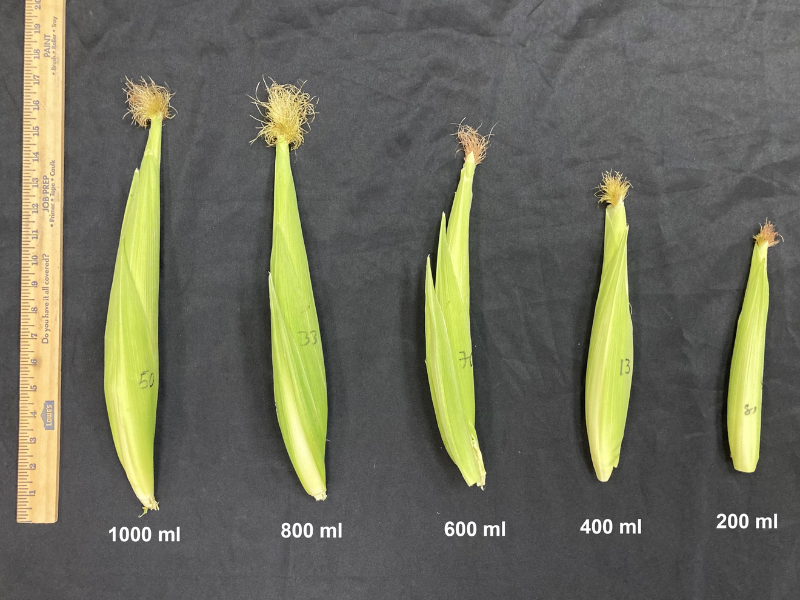By Eric Hamilton
Corn is a classic American crop. First cultivated in North America thousands of years ago, it now blankets American farmland from coast to coast. The U.S. grows more corn than any other country. And the grain is used for everything from tortilla chips to cow feed to biofuel.
But like most crops, corn is facing a new risk — climate change. Climate change isn’t just making the world warmer. It’s also changing when and how much rain falls. This leaves more corn farmers at risk of facing drought during part of the growing season.
Unfortunately, not all droughts are created equal. If it strikes at the wrong time, an entire field can be lost.
“A severe drought during the corn reproductive stage can cause a complete crop failure. Thus, understanding corn responses to drought and managing accordingly is critical for successful corn production,” says Ranadheer Vennam, graduate student in the Plant and Soil Sciences department at Mississippi State University.
Vennam studies how corn responds to drought. In his latest research, Vennam and his lab group looked at how sensitive corn flowering is to drought and the impacts it has for farmers.
Vennam presented his work at the 2022 ASA-CSSA-SSSA annual meeting, held in Baltimore, Maryland.
Corn flowering is rather complex. Each individual ovule sends out a very long silk, which must capture pollen from the tassels above the plant in order to produce a kernel. This requires careful coordination. “Successful reproduction in corn is all about timing,” says Dr. Raju Bheemanahalli (Vennam’s supervisor). “It takes less than two weeks for corn to pollinate, which is extremely sensitive to stressors, including drought.”
To determine the impact drought has on this process, Vennam’s team exposed corn plants to various levels of drought during flowering. They ran their trial at the R. R. Foil Plant Science Research Center, Mississippi State University. During the two-week flowering period, the researchers reduced the amount of water each plant received. In the most extreme test, the plants received just 20% of the amount of water they needed.
To track how drought affects the plants, the researchers measured how much the silks grew every day. They also measured the final yield and key quality traits of the kernels, like the amount of starch and protein they had. Vennam’s study also tracked key aspects of plant growth, like the leaf chlorophyll content.
When exposed to severe drought, the ears of corn produced much less silk biomass than healthy ears did. The number of silks was also about one-third lower. Without enough healthy silks, corn ears can’t grow many kernels. Vennam saw that yield decreased by 90% in the severe drought treatment. This drop in yield came from a severe reduction in both the number of kernels and how much each kernel weighed.
As a comparison, the researchers also tested a month-long drought stress after flowering was over. Even though this drought lasted more than twice as long at this stage, yield wasn’t affected that much. “This illustrates the sensitivity of a reproductive stage to drought stress and its timing of it and how stress affects corn production,” says Bheemanahalli.
With the information gained from this study, the researchers are now trying to make corn more resilient to drought stress. The next step is finding genetics of corn that are naturally able to handle drought better during flowering. If they can succeed in finding these hardier plants, breeders can work to cross these traits into the varieties of corn that farmers want to grow. The result could be better varieties/ hybrids that can adapt to our changing climate.
This research was supported in part by the Mississippi Agricultural and Forestry Experiment Station, Special Research Initiative (MAFES-SRI), Mississippi State University.







Post a comment
Report Abusive Comment